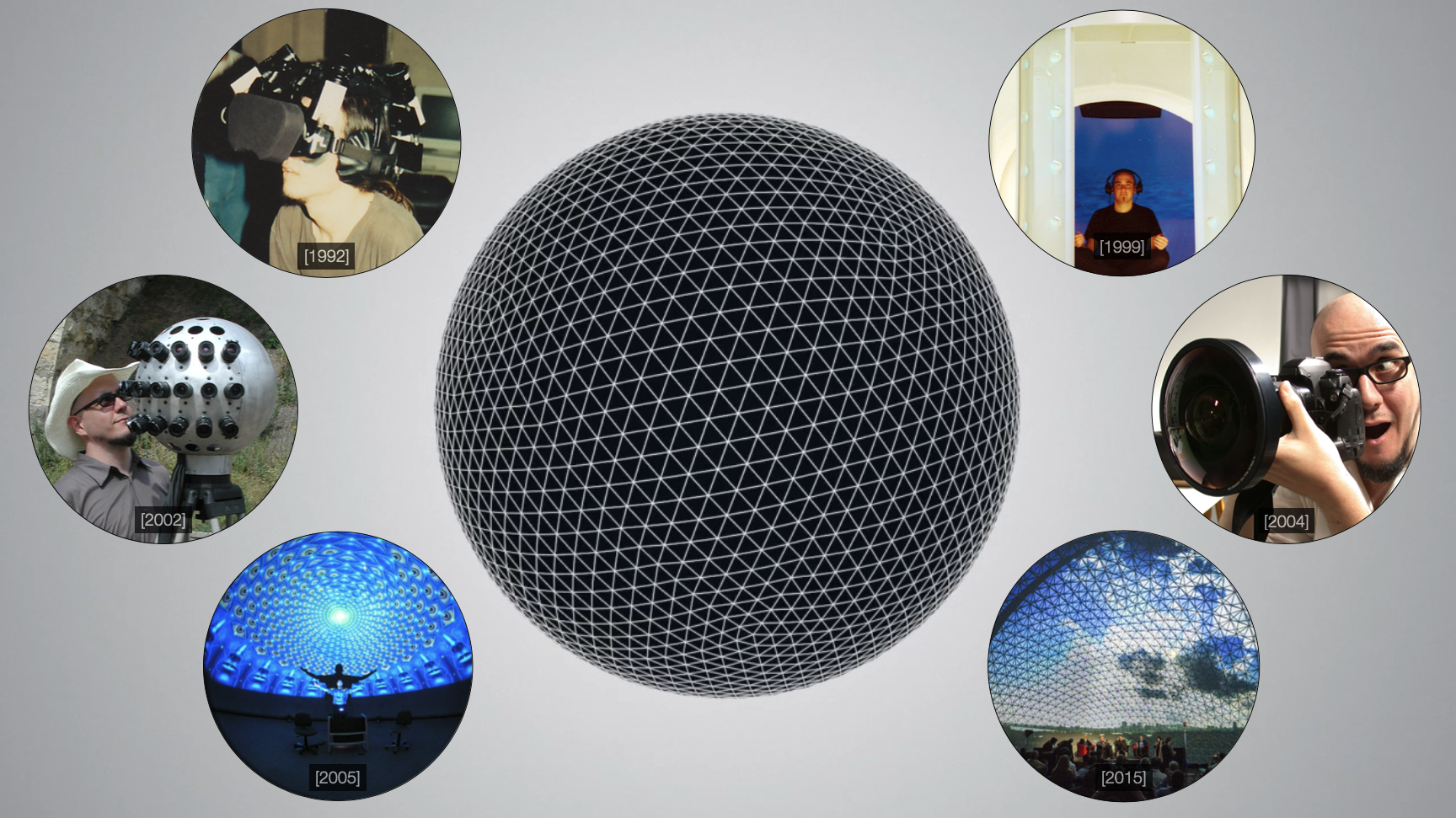Beyond the bubble: paradoxes of perspective
On the history and development of spherical media environments

At the 2016 Gray Area Festival, I had the opportunity to present my research on the history and development of spherical media tools and environments. I explored how these tools have shaped our perception of the world and expanded our perceptual capabilities. Some of the topics I cover:
- Throughout human history, the "dome of the sky" has played a crucial role in how cultures made sense of the world. Our ancestors used celestial events to anticipate life cycles, develop timekeeping systems, and navigate their surroundings. This cosmic perspective was often embodied in the design of dwellings and sacred spaces, aligning earthly life with celestial rhythms.
- A significant shift occurred with the ideas of Plato and Aristotle, who began to view the universe from an external perspective. This change in viewpoint laid the groundwork for the Copernican revolution, which profoundly impacted European imagination and understanding of the cosmos. It challenged not only our physical place in the universe but also our philosophical understanding of humanity's significance.
- In the 20th century, planetariums emerged as powerful tools for immersing audiences in cosmic experiences. The Zeiss-engineered installations, in particular, brought the night sky to life for millions, inspiring a sense of cosmic unity and wonder. This technology evolved alongside the space race, creating intersections between space exploration, popular media, and public imagination.
- One of the more influential examples of this intersection was the collaboration between Wernher von Braun and Walt Disney. Their partnership aimed to convince the American public of the feasibility and necessity of space colonization, shaping the narrative of space exploration for generations to come.
As we continue to develop new tools and metaphors for understanding the cosmos, it's crucial to reflect on how these perspectives shape our understanding of the world and our place in it. The history of spherical media reminds us that our cosmic perspective is not just about looking outward, but also about how we see ourselves and our role in the universe.

